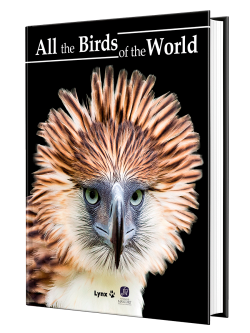Birds of Colombia
59.90€
53.91€
📚 Lynx and BirdLife International Field Guides Collection
The most complete and updated field guide to the birds of Colombia.
For birders, Colombia really is number one! Not only have more species been recorded there than in any other country, but almost one-fifth of the world’s birds occur in Colombia, packed into an area slightly greater than 1,100,000 km2.
Stretching east to west from the Orinoco River to the Pacific Ocean, and north to south from the Caribbean to Amazonian headwaters, the country’s topography is remarkably diverse. Here, the Andes are separated into three ranges by two important valleys, the Cauca and the Magdalena, and there are two very important massifs, Santa Marta and Perijá, in the north of the country—in particular, the Santa Marta range is one of the great endemic hotspots in the world. In recent years, a series of standard birding routes has evolved, many of them focused on the country’s privately and publicly owned protected areas, permitting keen birders to see nearly all of Colombia’s many special birds, from extravagantly plumaged parrots and hummingbirds to skulking antpittas.
Nevertheless, in South America the capacity to escape the beaten track and make novel findings is perhaps nowhere better than Colombia, as exemplified by the recent discovery of an apparently new species of antpitta close to the city of Cali.

 English
English Español
Español Català
Català







































 Steve Hilty
Steve Hilty







评价
目前还没有评价